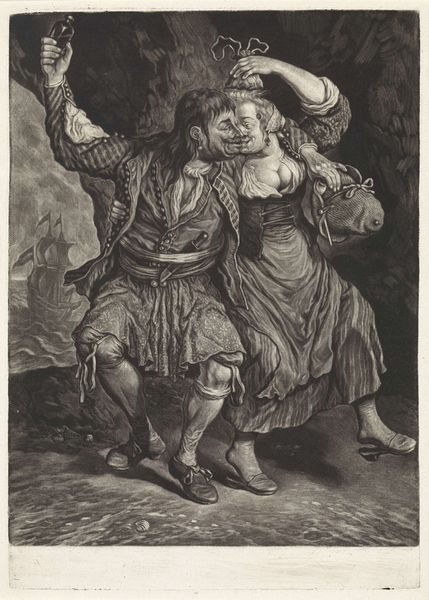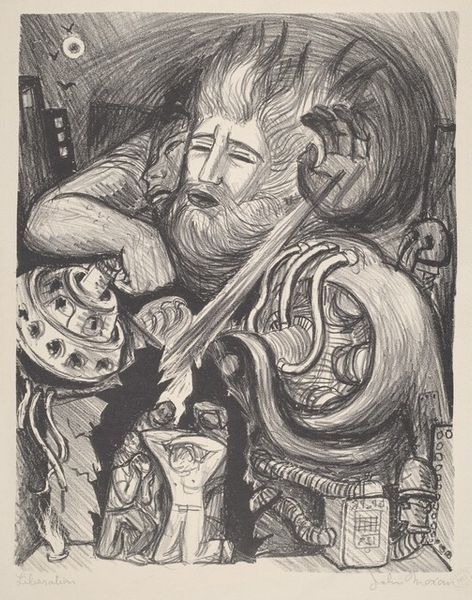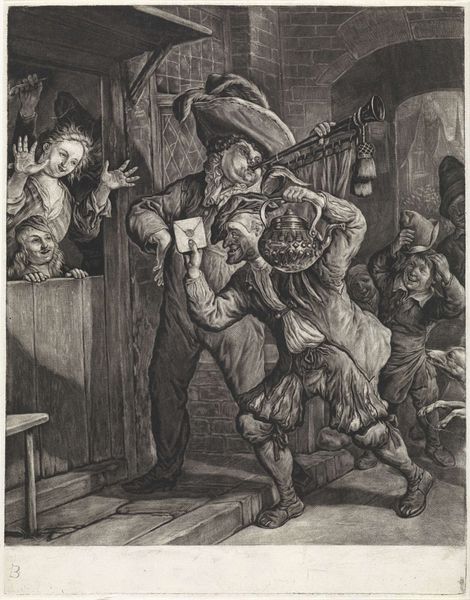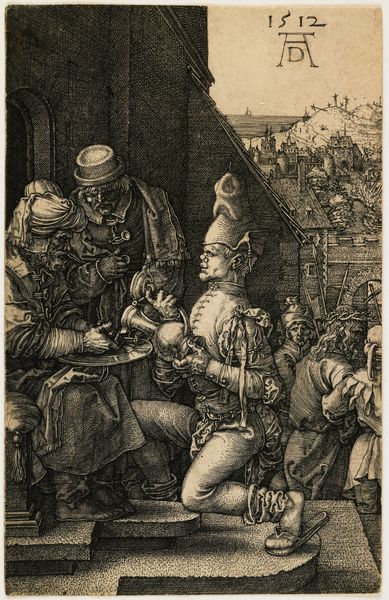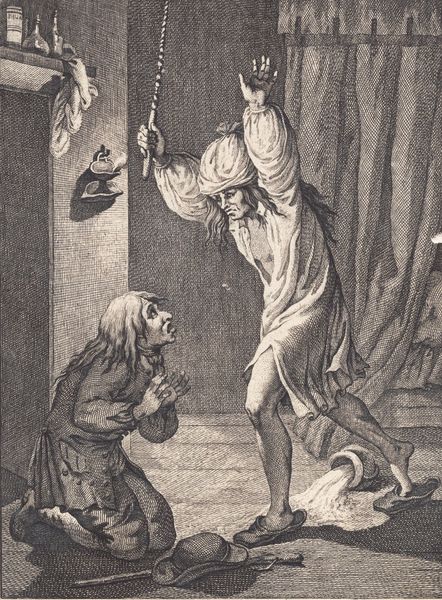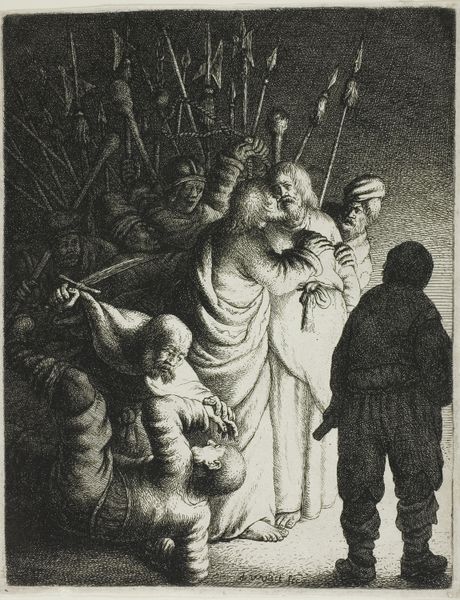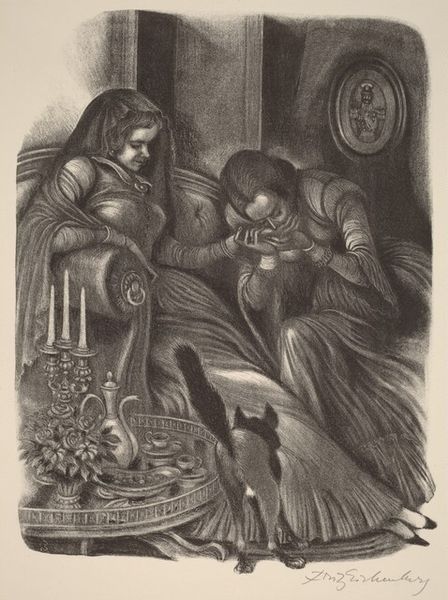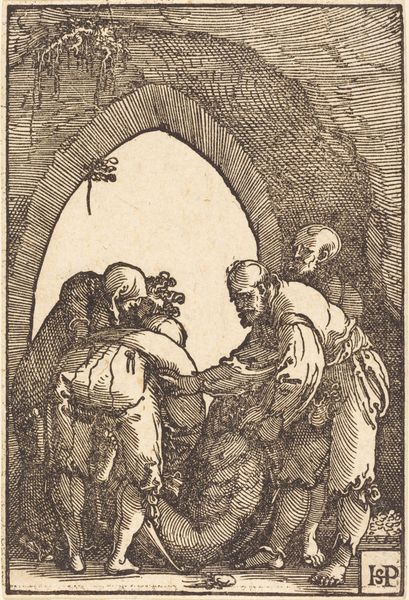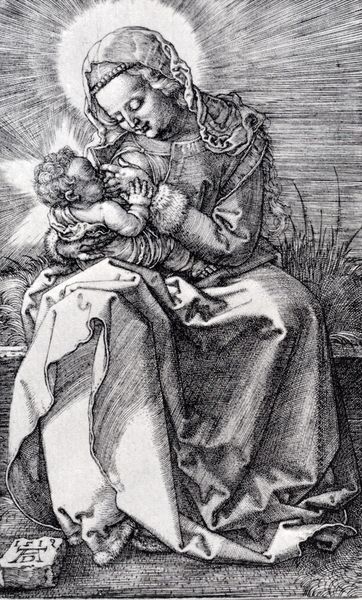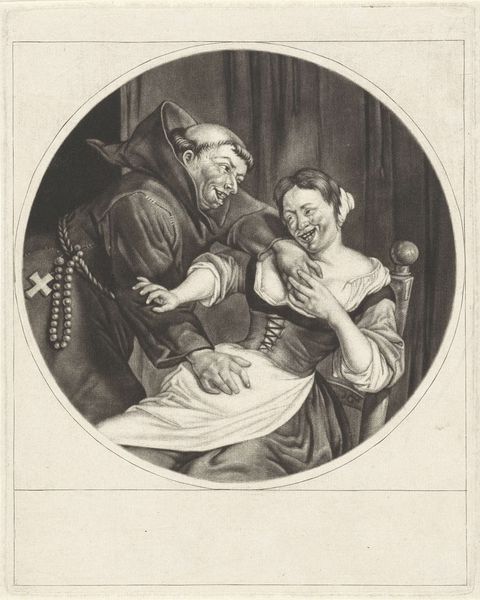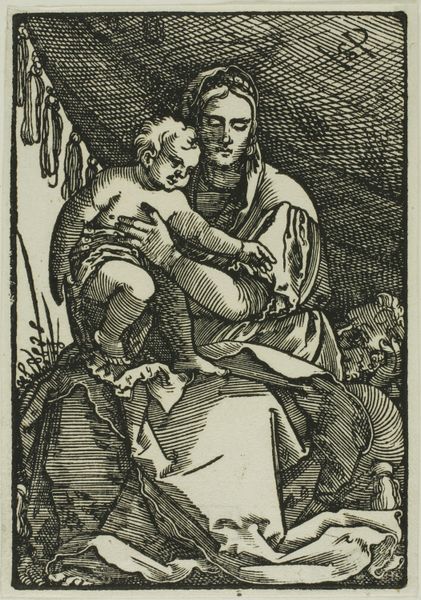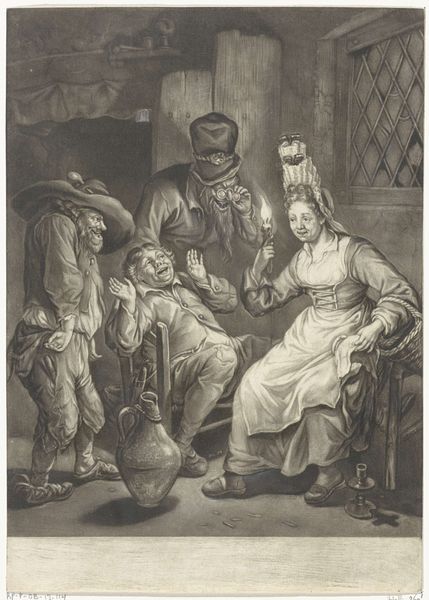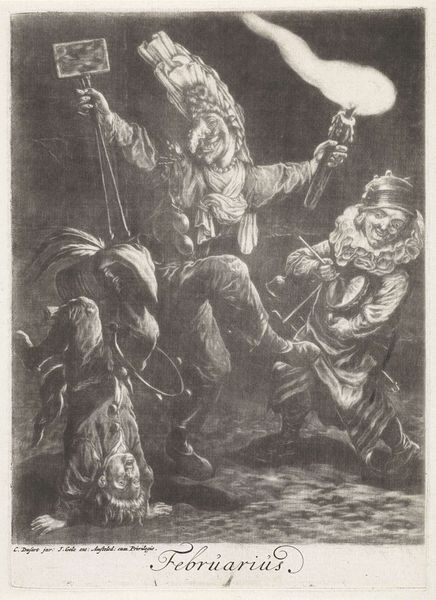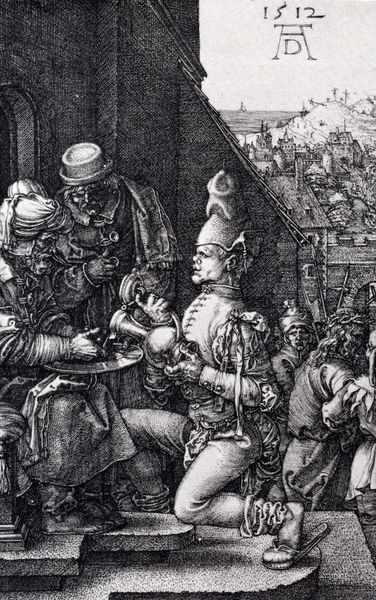
Dimensions: 33 x 27 cm
Copyright: Public domain
Curator: This intense drawing is titled "Bluebeard" and it comes to us from 1862, by the inimitable Gustave Doré. Editor: It’s striking, isn't it? Almost claustrophobic with its density of line. The lighting is used brilliantly, drawing your eye right to the keys in their hands. You immediately feel a sense of unease. Curator: Doré was a master of dramatic illustration. "Bluebeard", crafted in pen and ink, speaks volumes about the anxieties surrounding power dynamics. Editor: Absolutely. It feels incredibly relevant, when thinking about patriarchal structures and their insidious impact on women’s lives. The keys themselves become symbolic of control, of knowledge withheld and potential danger. Think of it; each one of those keys opens a chamber holding a deadly secret. The young bride has a very limited agency; and Dore communicates this so effectively through their body language. Curator: This narrative became immensely popular during the 19th century and tapped into societal concerns about the roles and vulnerabilities of women. This Romanticism style and the social commentary offer an important view on how such tales shaped views on gender roles at the time. The imagery suggests secrets hidden and spaces restricted to men only. Editor: Exactly. And Dore’s rendering, by visually illustrating the fairy tale, provided the 19th-century readers and society with an avenue to question gender relations of their society. What the tale may have implied gets a loud voice and powerful visual here. Curator: Beyond the social context, there's also something enduringly fascinating about this representation of the macabre in "Bluebeard", given our fascination with the darker side of human nature. Editor: It definitely sticks with you. You begin thinking what choices, freedoms are actually afforded to the protagonist… It provokes deeper considerations of art and its link with a specific social condition. Curator: And so a tale and an image crafted in another time continues to encourage critical discourse about enduring power structures in society today. Editor: Doré’s dramatic representation keeps this important conversation alive.
Comments
No comments
Be the first to comment and join the conversation on the ultimate creative platform.
